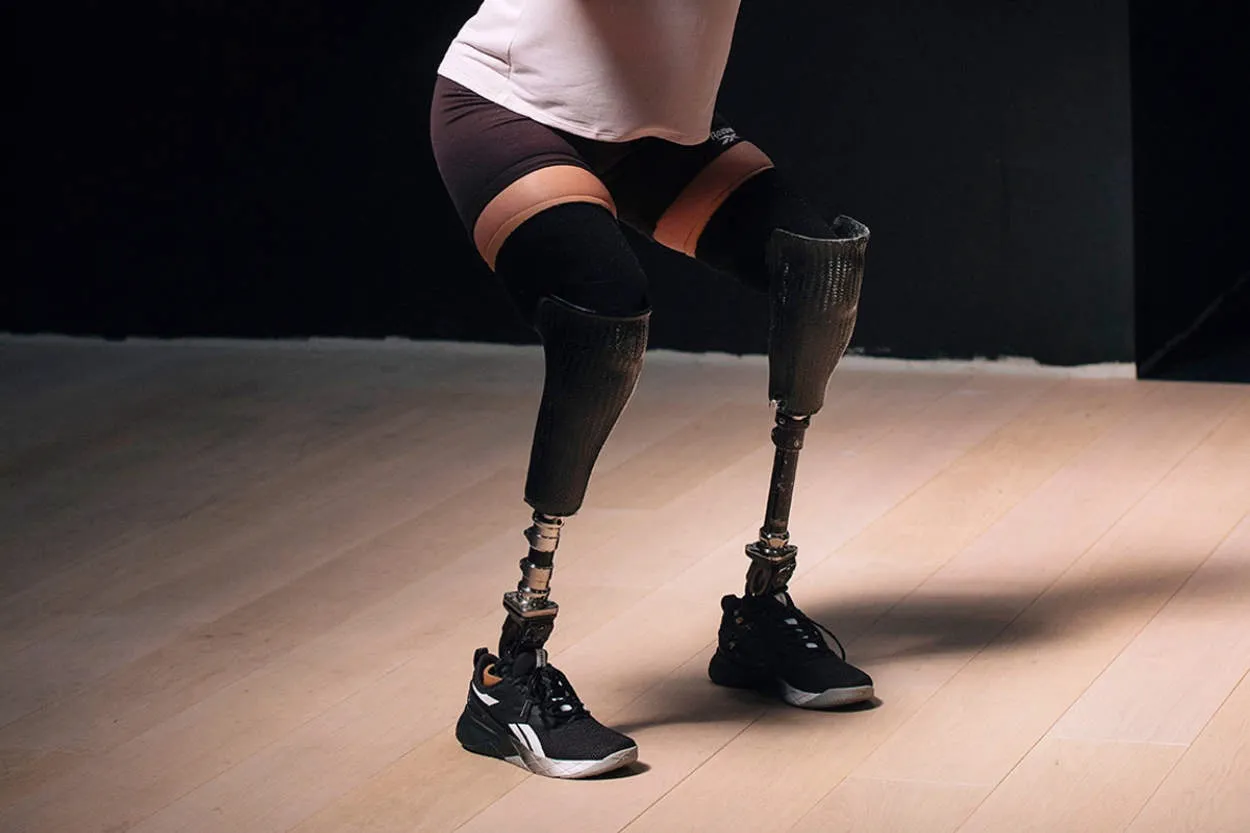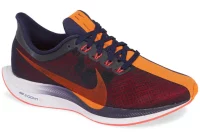The growth of adaptive sports footwear has been instrumental in promoting inclusivity in design. These specially designed shoes cater to individuals with diverse physical abilities, allowing them to participate in sports and physical activities comfortably. With advancements in technology and a greater focus on accessibility, adaptive sports footwear is paving the way for a more inclusive and diverse sporting landscape.
Designing Shoes for Athletes with Disabilities
The growth of adaptive sports footwear has brought about a new wave of inclusivity in design. As the world becomes more aware of the importance of diversity and accessibility, the athletic shoe industry has stepped up to the challenge of creating footwear that caters to athletes with disabilities.
Manufacturers have been investing in research and development to design shoes that can accommodate various types of disabilities. These shoes are not only functional but also stylish, allowing athletes with disabilities to express their individuality and feel confident while participating in sports.
One of the key considerations in designing shoes for athletes with disabilities is providing optimal support and stability. Different disabilities require different types of support, and shoe designers have been working closely with athletes and medical professionals to understand their unique needs and develop footwear solutions that address those needs.
In addition to support, adaptability is another crucial aspect of designing shoes for athletes with disabilities. Many of these shoes feature adjustable elements such as straps, laces, or fastening systems that can be easily customized based on the athlete’s specific requirements. This adaptability enables athletes to have a comfortable and secure fit, promoting optimal performance on the field.
Furthermore, the use of advanced materials and technologies has revolutionized the design process for adaptive sports footwear. Lightweight and breathable fabrics enhance comfort, while innovative cushioning and shock-absorption systems provide extra protection and reduce the risk of injuries.
With the rise of adaptive sports footwear, manufacturers are not only creating shoes that cater to specific disabilities but also focusing on creating a sense of inclusivity. Athletes with disabilities often face societal barriers, and by designing footwear that is both functional and fashionable, they are breaking down those barriers and encouraging a more inclusive culture in sports.
As designers continue to push the boundaries of innovation, we can expect to see more advancements in adaptive sports footwear in the years to come. By prioritizing the needs of athletes with disabilities, the industry is taking a significant step towards creating a more inclusive and accessible space for everyone in the world of sports.
Innovations in Adaptive Footwear
Adaptive sports footwear has seen remarkable growth in recent years, primarily driven by an increasing focus on inclusivity in design. Manufacturers and designers are recognizing the importance of creating footwear that caters to a wider range of individuals with different physical abilities. This has sparked numerous innovations in the field, making adaptive footwear more functional, comfortable, and stylish than ever before.
One of the key advancements in adaptive footwear is the incorporation of adjustable features. Many adaptive footwear options now include adjustable straps, laces, and closures, allowing users to customize the fit according to their specific needs. This adaptability ensures a secure and comfortable fit, making it easier for individuals with various foot shapes and sizes to find suitable footwear.
Another notable innovation is the use of advanced materials in adaptive footwear construction. Manufacturers are now utilizing lightweight and durable materials that enhance performance and provide better overall support. These materials also contribute to the longevity of the footwear, ensuring that they can withstand the demands of various sports and activities.
Furthermore, advancements in cushioning and shock absorption technologies have greatly improved the comfort and functionality of adaptive sports footwear. These innovations aim to reduce the impact on joints and improve overall stability, allowing athletes of any ability level to participate in sports activities with greater confidence.
Design aesthetics have also received attention in the evolution of adaptive sports footwear. Manufacturers now offer a wider range of fashionable designs, aligning the footwear with current trends in the market. This not only allows individuals to express their personal style but also promotes inclusivity by eradicating the stigma associated with adaptive footwear.
In conclusion, the growth of adaptive sports footwear has paved the way for remarkable innovations in the industry. Through the incorporation of adjustable features, advanced materials, cushioning technologies, and improved design aesthetics, adaptive footwear has become more accessible, functional, and fashionable. These advancements play a crucial role in promoting inclusivity and ensuring that individuals of all abilities can actively participate in sports and enjoy the benefits of physical activity.
The Impact of Inclusive Design in Sports
In recent years, the growth of adaptive sports footwear has played a vital role in promoting inclusivity in sports. The emphasis on inclusive design has opened up new opportunities for athletes with diverse abilities to participate in a wider range of sports, breaking down barriers and fostering a more inclusive sporting community.
One of the key impacts of inclusive design in sports is the creation of specialized footwear that caters to the unique needs of athletes with disabilities. These innovative designs consider factors such as stability, support, and comfort, providing individuals with the necessary tools to excel in their chosen sport. Whether it’s adaptive running shoes with customized orthotic options or wheelchair basketball sneakers with improved traction and stability, the development of inclusive athletic footwear has revolutionized the sporting experience for athletes of all abilities.
Furthermore, inclusive design in sports extends beyond just footwear. Manufacturers have begun producing adaptive equipment and apparel that cater to individuals with different physical abilities. This ranges from adaptive gear for visually impaired athletes to clothing with easy-access features for athletes with limited mobility. By integrating inclusive design principles into all aspects of sports, the industry has made significant strides in ensuring equal opportunities and experiences for athletes regardless of their abilities.
The impact of inclusive design is not only felt by athletes themselves but also by society as a whole. By promoting inclusivity in sports, we challenge existing stereotypes and perceptions, shifting the narrative around disabilities and athleticism. This shift in mindset encourages a more diverse and accepting society, where individuals with disabilities are recognized for their capabilities rather than their limitations.
As we continue to witness the growth of adaptive sports footwear and inclusive design initiatives in sports, it is important to acknowledge the progress made while recognizing that there is still work to be done. It is crucial for designers, manufacturers, and sports organizations to collaborate and actively seek innovative solutions that further enhance inclusivity in sports at all levels. Only by working together can we continue to push the boundaries and ensure that sports are accessible and welcoming to everyone, regardless of their abilities.
Stories Behind Adaptive Athletic Shoes
The growth of adaptive sports footwear has paved the way for inclusivity in design, providing individuals with disabilities the opportunity to participate in sports and physical activities. These specialized shoes are not just designed to meet the needs of adaptive athletes, but also to empower them and showcase their unique stories.
Redefining Traditional Footwear
Adaptive athletic shoes challenge the conventional norms of traditional footwear by incorporating innovative features. These shoes are crafted with advanced technologies that cater to the specific requirements of different disabilities, ranging from lower limb differences to sensory issues.
Inspiring Stories of Triumph
Behind every pair of adaptive athletic shoes lies a story of triumph. These shoes have become a symbol of empowerment for individuals who have overcome significant challenges to pursue their passion for sports. Whether it’s an amputee sprinter breaking records on the track or a wheelchair basketball player dominating the court, adaptive athletic shoes are a testament to the resilience and determination of these athletes.
Collaborative Design Process
The creation of adaptive athletic shoes involves a collaborative design process that takes into account the input and feedback of adaptive athletes themselves. By working closely with designers, these athletes play an integral role in shaping the functionality and aesthetics of the shoes. This collaborative approach ensures that the shoes cater to the unique needs and preferences of the individuals who will be wearing them.
Promoting Inclusivity and Awareness
Adaptive sports footwear not only promotes inclusivity within the sports community but also raises awareness about the diverse abilities and talents of adaptive athletes. Through the presence of adaptive shoes in mainstream sports, society is challenged to redefine its perceptions and break down barriers, ultimately fostering a more inclusive and understanding environment for individuals with disabilities.
The Future of Accessible Sports Footwear
As the demand for adaptive sports footwear continues to grow, the future of accessible sports footwear looks promising. With a focus on inclusivity in design, manufacturers are pushing the boundaries of innovation to cater to athletes of all abilities.
One of the key advancements in accessible sports footwear is the development of customizable features. Brands are now creating shoes that can be easily adjusted to suit individual needs. This includes options for modifying the fit, cushioning, and support to accommodate different foot shapes and conditions.
Moreover, incorporating advanced materials plays a significant role in enhancing accessibility. Manufacturers are utilizing lightweight and breathable fabrics that offer improved comfort and flexibility. These materials also contribute to better moisture management and prevent skin injuries during prolonged use.
In addition to improved functionality, aesthetics are also being given greater attention. It is recognized that accessible sports footwear should not only perform exceptionally but also appeal to athletes who want to express their style and personality. As a result, we are witnessing a wide range of designs and color options specifically created for inclusive footwear.
The future of accessible sports footwear also lies in the integration of technology. Companies are exploring the use of smart technologies such as sensors and connectivity, enabling the collection of real-time data on biomechanics and performance. This information can assist athletes in optimizing their training routines and preventing injuries.
Furthermore, collaborations between sports footwear brands and adaptive athletes are driving innovation forward. By involving individuals with disabilities in the design and testing phases, the industry gains valuable insights and ensures that the footwear truly meets the needs of its users.
Overall, the growth of adaptive sports footwear is fostering inclusivity in design. With customizable features, advanced materials, improved aesthetics, and the integration of technology, the future of accessible sports footwear is set to empower athletes of all abilities to engage in their chosen sports comfortably and confidently.
Conclusion
The growth of adaptive sports footwear signifies a positive shift towards inclusivity in design. By recognizing the diverse needs of athletes with disabilities, manufacturers have developed innovative solutions to enhance performance and comfort. The advent of adaptive sports footwear opens up new possibilities for individuals to participate in sports and lead active lifestyles, promoting inclusivity and breaking down barriers.




